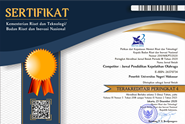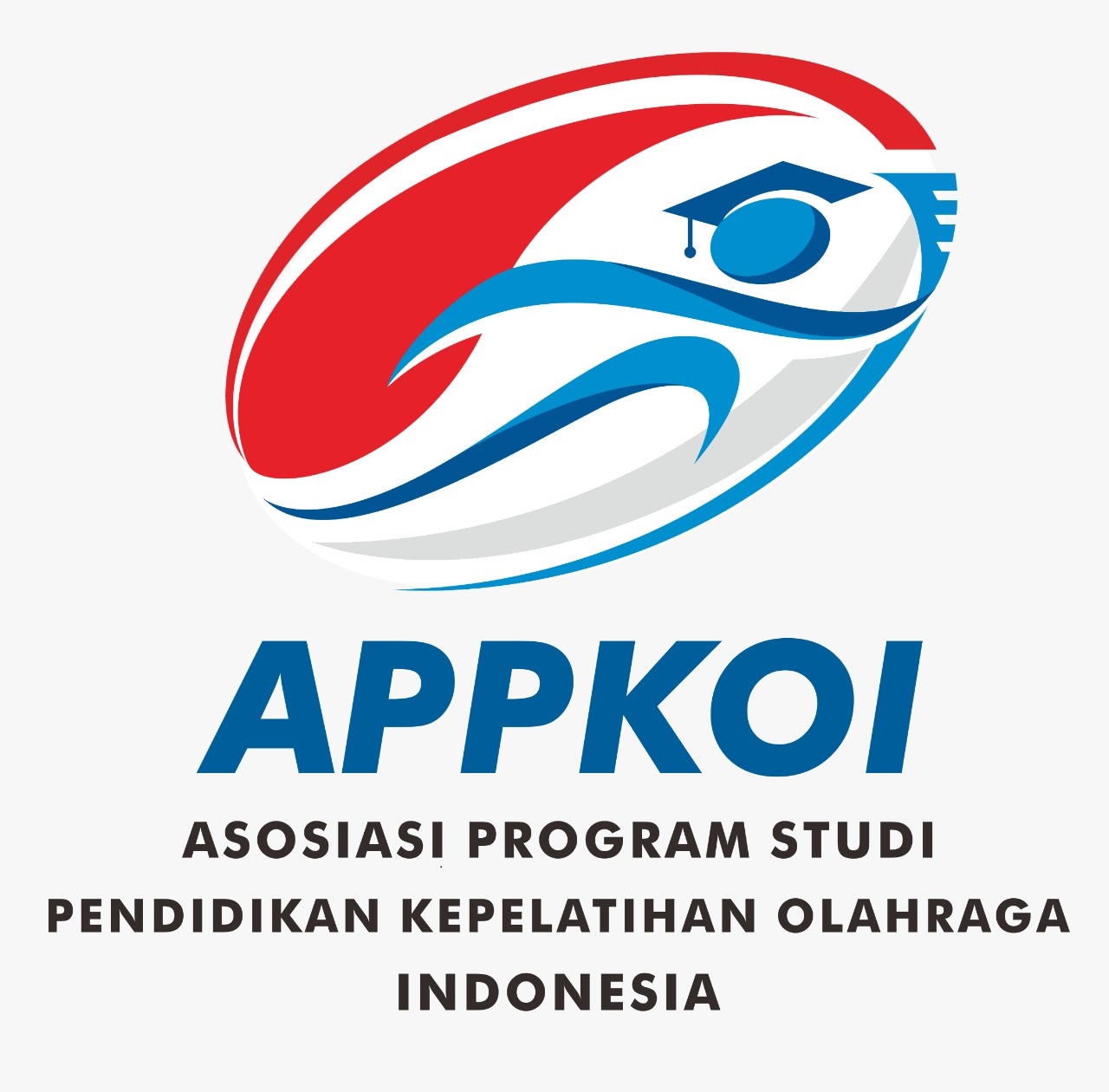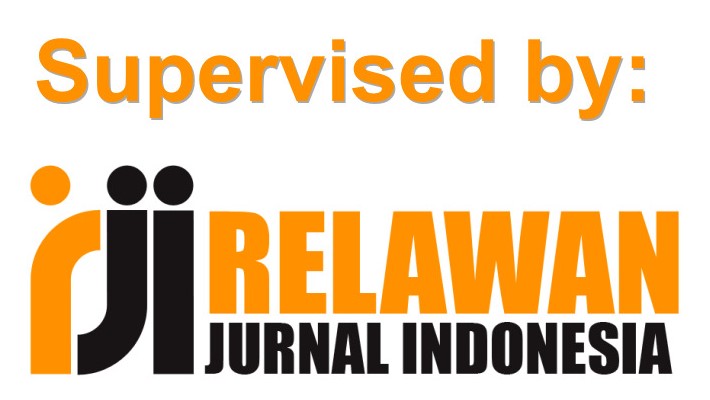Erikson’s Development Psychosocial Theory In The 21st Century: A Pedagogical Perspective In Physical Education
(1) Universitas Pendidikan Indonesia
(2) Universitas Pendidikan Indonesia
(3) Universitas Pendidikan Indonesia
(4) Universitas Pendidikan Indonesia
(*) Corresponding Author
DOI: https://doi.org/10.26858/cjpko.v16i2.63045
Abstract
Keywords
Full Text:
PDFReferences
Adlini, M. N., Dinda, A. H., Yulinda, S., Chotimah, O., & Merliyana, S. J. (2022). Metode Penelitian Kualitatif Studi Pustaka. Edumaspul: Jurnal Pendidikan, 6(1), 974–980. https://doi.org/https://doi.org/10.33487/edumaspul.v6i1.3394
Barber, W. (2018). Inclusive and accessible physical education: rethinking ability and disability in pre-service teacher education. Sport, Education and Society, 23(6), 520–532. https://doi.org/10.1080/13573322.2016.1269004
Batra, S. (2013). The Psychosocial Development of Children: Implications for Education and Society — Erik Erikson in Context. Contemporary Education Dialogue, 10(2), 249–278. https://doi.org/10.1177/0973184913485014
Bentley, G. F., Goodred, J. K., Jago, R., Sebire, S. J., Lucas, P. J., Fox, K. R., Stewart-Brown, S., & Turner, K. M. (2012). Parents’ views on child physical activity and their implications for physical activity parenting interventions: a qualitative study. BMC Pediatrics, 12(1), 180. https://doi.org/10.1186/1471-2431-12-180
Boehm, J. K., Vie, L. L., & Kubzansky, L. D. (2012). The Promise of Well-Being Interventions for Improving Health Risk Behaviors. In Current Cardiovascular Risk Reports (Vol. 6, Issue 6, pp. 511–519). Current Medicine Group LLC 1. https://doi.org/10.1007/s12170-012-0273-x
Cao, J., Wang, K., Shi, Y., Pan, Y., Lyu, M., & Ji, Y. (2023). The associations between social support change and physical activity trajectory from late adolescence to young adulthood. BMC Public Health, 23(1), 1496. https://doi.org/10.1186/s12889-023-16422-z
Chakraborty, B., & Ferguson, C. J. (2010). Creating Friendly and Supportive Environments for Teachers. Childhood Education, 86(5), 290–292. https://doi.org/10.1080/00094056.2010.10521410
Chen, P., Wang, D., Shen, H., Yu, L., Gao, Q., Mao, L., Jiang, F., Luo, Y., Xie, M., Zhang, Y., Feng, L., Gao, F., Wang, Y., Liu, Y., Luo, C., Nassis, G. P., Krustrup, P., Ainsworth, B. E., Harmer, P. A., & Li, F. (2020). Physical Activity and health in Chinese children and adolescents: expert consensus statement (2020). British Journal of Sports Medicine, 54(22), 1321. https://doi.org/10.1136/bjsports-2020-102261
Dobell, A., Pringle, A., Faghy, M. A., & Roscoe, C. M. P. (2021). Educators' perspectives on the value of physical education, physical activity and fundamental movement skills for early years foundation stage children in England. Children, 8(5). https://doi.org/10.3390/children8050338
Dyson, B. (2014). Quality Physical Education: A Commentary on Effective Physical Education Teaching. Research Quarterly for Exercise and Sport, 85(2), 144–152. https://doi.org/10.1080/02701367.2014.904155
Farrance, C., Tsofliou, F., & Clark, C. (2016). Adherence to community-based group exercise interventions for older people: A mixed-methods systematic review. Preventive Medicine, 87, 155–166. https://doi.org/https://doi.org/10.1016/j.ypmed.2016.02.037
Gandana, I., & Oktaviandy, R. (2021). Social Media use among Indonesia’s Generation Z: A Case of University Students in Bandung, West Java. Komunitas, 13(2), 168–178. https://doi.org/10.15294/komunitas.v13i2.28856
Hedegaard, M., Eriksen, E., & Editors, Ø. (n.d.). Children’s Exploration and Cultural Formation (p. 29). http://www.springer.com/series/7601
Iqbal, A., Kausar, S., & khan, A. A. (2022). Involvement in Physical Education as Predictor of Students Health and Academic Success: A Cross-sectional Approach. Global Educational Studies Review, VII(II), 350–360. https://doi.org/10.31703/gesr.2022(vii-ii).33
Jerome, G. J., Boyer, W. R., Bustamante, E. E., Kariuki, J., Lopez-Jimenez, F., Paluch, A. E., Swift, D. L., Webber-Ritchey, K. J., Barone Gibbs, B., & null, null. (2023). Increasing Equity of Physical Activity Promotion for Optimal Cardiovascular Health in Adults: A Scientific Statement From the American Heart Association. Circulation, 147(25), 1951–1962. https://doi.org/10.1161/CIR.0000000000001148
Kalina, I., Golubev, A., & Aidarov, R. (2018a). The Role of Physical Education in Developing Students’ Social and Psychological Qualities of a Personality. SHS Web of Conferences, 50, 01075. https://doi.org/10.1051/shsconf/20185001075
Kalina, I., Golubev, A., & Aidarov, R. (2018b). The Role of Physical Education in Developing Students’ Social and Psychological Qualities of a Personality. SHS Web Conf., 50. https://doi.org/10.1051/shsconf/20185001075
Keles, B., McCrae, N., & Grealish, A. (2020). A systematic review: the influence of social media on depression, anxiety and psychological distress in adolescents. International Journal of Adolescence and Youth, 25(1), 79–93. https://doi.org/10.1080/02673843.2019.1590851
Kemph, J. P. (1969). Erik H. Erikson. Identity, youth and crisis. New York: W. W. Norton Company, 1968. Behavioral Science, 14(2), 154–159. https://doi.org/https://doi.org/10.1002/bs.3830140209
Lee, Y., Hwang, J., Lim, S., & Kim, J. T. (2012). Identifying Characteristics of Design Guidelines for Elderly Care Environments from the Holistic Health Perspective. Indoor and Built Environment, 22(1), 242–259. https://doi.org/10.1177/1420326X12471101
Leyton-Román, M., Núñez, J. L., & Jiménez-Castuera, R. (2020). The importance of supporting student autonomy in physical education classes to improve intention to be physically active. Sustainability (Switzerland), 12(10). https://doi.org/10.3390/su12104251
Lu, C., & Buchanan, A. (2014). Developing Students’ Emotional Well-being in Physical Education. Journal of Physical Education, Recreation & Dance, 85(4), 28–33. https://doi.org/10.1080/07303084.2014.884433
Lupu, E. (2014). The Importance of Physical Education Lessons for the Formation of Self-control and the Decrease of the Reaction to Frustration of Students (The Rosenzweig Projective Test). Procedia - Social and Behavioral Sciences, 159, 273–277. https://doi.org/https://doi.org/10.1016/j.sbspro.2014.12.371
Maree, J. G. (2022). The psychosocial development theory of Erik Erikson: a critical overview. In The Influence of Theorists and Pioneers on Early Childhood Education (1st Edition). Routledge. https://doi.org/https://doi.org/10.4324/9781003120216
Murphy, M. H., Carlin, A., Woods, C., Nevill, A., MacDonncha, C., Ferguson, K., & Murphy, N. (2018). Active Students Are Healthier and Happier Than Their Inactive Peers: The Results of a Large Representative Cross-Sectional Study of University Students in Ireland. Journal of Physical Activity and Health, 15(10), 737–746. https://doi.org/10.1123/jpah.2017-0432
Namwambah, T. D. (2020). Critical Thinking and Value Creating Education for Human Development. Journal of Advances in Education and Philosophy, 04(03), 118–123. https://doi.org/10.36348/jaep.2020.v04i03.007
Orenstein, G. A., & Lewis, L. (2022). Erikson Stages of Psychosocial Development. StatPearls Publishing. https://www.ncbi.nlm.nih.gov/books/NBK556096/
Pitaloka, D. L., Dimyati, D., & Purwanta, E. (2021). Peran Guru dalam Menanamkan Nilai Toleransi pada Anak Usia Dini di Indonesia. Jurnal Obsesi : Jurnal Pendidikan Anak Usia Dini, 5(2), 1696–1705. https://doi.org/10.31004/obsesi.v5i2.972
Rasberry, C. N., Lee, S. M., Robin, L., Laris, B. A., Russell, L. A., Coyle, K. K., & Nihiser, A. J. (2011). The association between school-based physical activity, including physical education, and academic performance: A systematic review of the literature. Preventive Medicine, 52, S10–S20. https://doi.org/https://doi.org/10.1016/j.ypmed.2011.01.027
Rico-González, M. (2023a). Developing Emotional Intelligence through Physical Education: A Systematic Review. Perceptual and Motor Skills, 130(3), 1286–1323. https://doi.org/10.1177/00315125231165162
Rico-González, M. (2023b). Developing Emotional Intelligence through Physical Education: A Systematic Review. Perceptual and Motor Skills, 130(3), 1286–1323. https://doi.org/10.1177/00315125231165162
Sneed, R. S., El-Alamin, L., Thrower, M., Nadrowski, J., & Habermehl, K. (2023). Harnessing education and lifestyle change to support transitional health for returning citizens: a feasibility study protocol. Pilot and Feasibility Studies, 9(1), 141. https://doi.org/10.1186/s40814-023-01369-0
Sun, F., Norman, I. J., & While, A. E. (2013). Physical activity in older people: a systematic review. BMC Public Health, 13(1), 449. https://doi.org/10.1186/1471-2458-13-449
Tarigan, B., Hendrayana, Y., & Wijaya, K. E. (2017). Can Scientific Approach in Physical Education Improve Creativity and Physical Fitness of Junior High School Students Living in Coastal Area? IOP Conference Series: Materials Science and Engineering, 180(1), 012155. https://doi.org/10.1088/1757-899X/180/1/012155
Taylor, D. (2014). Physical activity is medicine for older adults. Postgraduate Medical Journal, 90(1059), 26–32. https://doi.org/10.1136/postgradmedj-2012-131366
Weiss, M. R. (2020). Motor Skill Development and Youth Physical Activity: A Social Psychological Perspective. Journal of Motor Learning and Development, 8(2), 315–344. https://doi.org/10.1123/jmld.2020-0009
White, P. H., & McManus, M. (2015). Investing in the health and well-being of young adults. In Journal of Adolescent Health (Vol. 57, Issue 1, p. 126). Elsevier USA. https://doi.org/10.1016/j.jadohealth.2015.04.005
Zubala, A., MacGillivray, S., Frost, H., Kroll, T., Skelton, D. A., Gavine, A., Gray, N. M., Toma, M., & Morris, J. (2017). Promotion of physical activity interventions for community-dwelling older adults: A systematic review of reviews. PLOS ONE, 12(7), e0180902-. https://doi.org/10.1371/journal.pone.0180902.
Article Metrics
Abstract view : 7 times | PDF view : 1 timesRefbacks
- There are currently no refbacks.
Copyright (c) 2024 Herdiansyah Herdiansyah

This work is licensed under a Creative Commons Attribution 4.0 International License.
COMPETITOR IS LICENSED BY :
 COMPETITOR is licensed under a Creative Commons Attribution 4.0 International License.
COMPETITOR is licensed under a Creative Commons Attribution 4.0 International License.
COMPETITOR EDITORIAL LOCATION :
![]() Kampus FIK Banta Bantaeng, Jalan Wijaya Kusuma Nomor 14, Rappocini, Makassar, Postal Code 90222
Kampus FIK Banta Bantaeng, Jalan Wijaya Kusuma Nomor 14, Rappocini, Makassar, Postal Code 90222
COMPETITOR IS INDEXED BY















